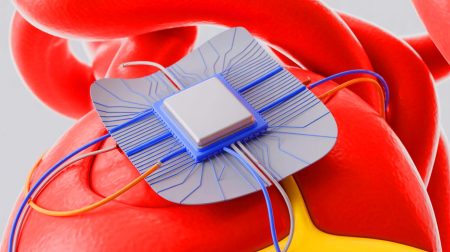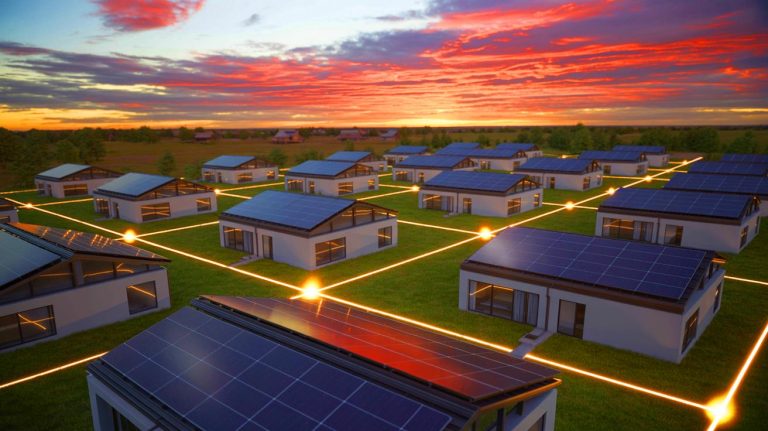| IN A NUTSHELL |
|
In a groundbreaking move, California-based Sunrun has unveiled its CalReady system, turning thousands of homes into the United States’ largest virtual power plant. By linking 75,000 home batteries from over 56,000 customers, Sunrun offers an innovative solution to energy demands, leveraging domestic battery storage and solar panels. This pioneering effort not only supplies 375 megawatts of backup power—enough to energize approximately 280,000 homes, comparable to the entirety of Ventura County—but also helps alleviate the pressure on California’s power grid during the sweltering summer months. This initiative marks a significant step in the shift toward sustainable energy solutions.
The Rise of Virtual Power Plants
The concept of virtual power plants (VPPs) is transforming the energy landscape. Unlike traditional power plants, which rely on centralized production facilities, VPPs use a network of decentralized, often renewable energy resources. Sunrun’s CalReady system exemplifies this shift. By integrating thousands of home-based solar panels and batteries, the system creates a flexible, sustainable energy network. This network not only provides electricity but also has the potential to reduce energy costs and carbon emissions.
Sunrun’s approach also highlights the benefits of using solar energy. By storing excess energy generated during the day, the system can release power back to the grid when demand spikes, particularly between 4:00 and 9:00 PM from May to October. This period typically sees increased reliance on fossil fuels, meaning CalReady can significantly reduce the need for traditional power sources. As Sunrun CEO Mary Powell puts it, this initiative is a “customer-led energy revolution,” underscoring the growing role consumers play in the energy sector.
Benefits Beyond Power Generation
While energy generation is a primary focus, the benefits of Sunrun’s CalReady system extend beyond just providing power. The integration of solar energy into the home energy grid can lead to significant cost savings for consumers. By generating their own electricity, homeowners can reduce their dependency on traditional energy sources, which are often more expensive and environmentally damaging.
Moreover, Sunrun’s system is designed to minimize environmental impact. The use of 100% solar energy means reduced carbon emissions, contributing to cleaner air and a healthier environment. This aspect of the project aligns with broader efforts to combat climate change by reducing reliance on fossil fuels. Furthermore, by contributing to a more stable power grid, CalReady helps prevent power outages that can have severe economic and social implications.
Comparing to Other Innovations
The CalReady system is part of a broader trend in the energy industry toward more sustainable and efficient solutions. Companies like Tesla have also ventured into the realm of virtual power plants, offering similar products and services. These developments signal a growing recognition of the need for innovation in energy production and distribution.
While Tesla’s approach is well-known, Sunrun’s large-scale implementation of a virtual power plant distinguishes it as a leader in this space. The scale at which CalReady operates—linking tens of thousands of homes—is unprecedented. This not only demonstrates Sunrun’s commitment to innovation but also showcases the potential of VPPs to transform the energy sector.
Future Prospects in Energy
As the largest virtual power plant in the U.S., Sunrun’s CalReady system sets a precedent for future energy solutions. The success of this project could inspire further developments in renewable energy technologies and virtual power plant systems. As more companies and consumers recognize the benefits of such systems, the energy landscape is likely to undergo significant changes.
Looking ahead, the potential for expansion and improvement in VPP technology is vast. By continuing to integrate innovative technologies and expand their networks, companies like Sunrun can play a pivotal role in reducing global reliance on fossil fuels. As the energy sector evolves, one wonders how virtual power plants will continue to shape our approach to sustainable energy. What new innovations will emerge as we strive for a more sustainable future?
Did you like it? 4.7/5 (23)










Wow, this sounds like a game-changer for the energy industry! 🌟
How do they ensure the security of all these interconnected systems?
Impressive! Can’t wait to see this tech in other states. 👍
Does this mean my energy bill will finally go down? 🤔
I’m curious about the installation process. Is it complicated?
Costly to the homeowner that buys the batteries and probably little to no compensation for using their energy.
56,000 homes? That’s mind-blowing!
Will this system work during a blackout? 🕯️
How long until this tech is available nationwide?
Seems like a lot of hype. Is it truly sustainable?
Great job, Sunrun! This is the future! 🌞
How much are they paying the owners of the batteries that the owners had to purchase? … or is this just another way to scam homeowners out of their money and use their devices without owners permission and without compensation?
Can this tech be adapted for commercial buildings too?
What about battery life? How long do they last?
How much does it cost to join this virtual power plant?
Finally, a step towards true energy independence. 💪
How are the batteries recycled? ♻️
Sounds like a sci-fi movie come to life! 🔋
I bet this will inspire other companies to innovate too!
What’s the catch? There must be a downside somewhere.
Can we trust this system during emergencies like wildfires? 🔥
Thank you for leading the way in sustainable energy! 🙏
How does this affect our privacy and data security?
Is this technology compatible with all types of solar panels?
🤔 I wonder how this compares to Tesla’s approach?
This should be mandatory for all new homes! 🌍
How does the system handle cloudy days?
Is there financial assistance for low-income families to join?
Sounds amazing, but what’s the maintenance like?
Will Sunrun expand this tech outside of California?
How do they protect against hacking? 🤖
Does this mean fewer power outages? I hope so!
What incentives are there for homeowners to participate?
Can the system be upgraded as technology advances?
What happens if the battery fails?
How long did it take to develop this system?
Is Sunrun partnering with any other companies?
Incredible! When can we expect an expansion? 🚀
For truly amazing synergy & efficiency just look at Large Solar Canopies co-located with Vehicle-2-Grid Electric Vehicle Charging. France is already implementing a 5 year plan to solarize ALL existing parking lots with more than 75 spaces within 5 years. This is the rapid deployment of widely distributed, reliable community micro grids generating & storing cheap solar energy for almost everyone, right where they live & work. No new utility transmission, site acquisition or other site improvement spending required. This fixes the mismatch between relatively wealthy leased property owners & their tenants, who pay the utility bills. All the new owner occupied health care facilities in my county in northern CA have already shaded 80% of their parking with solar. They get it.